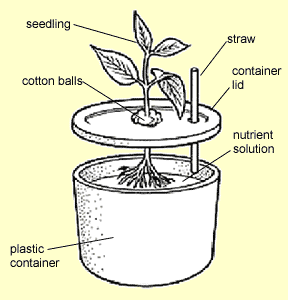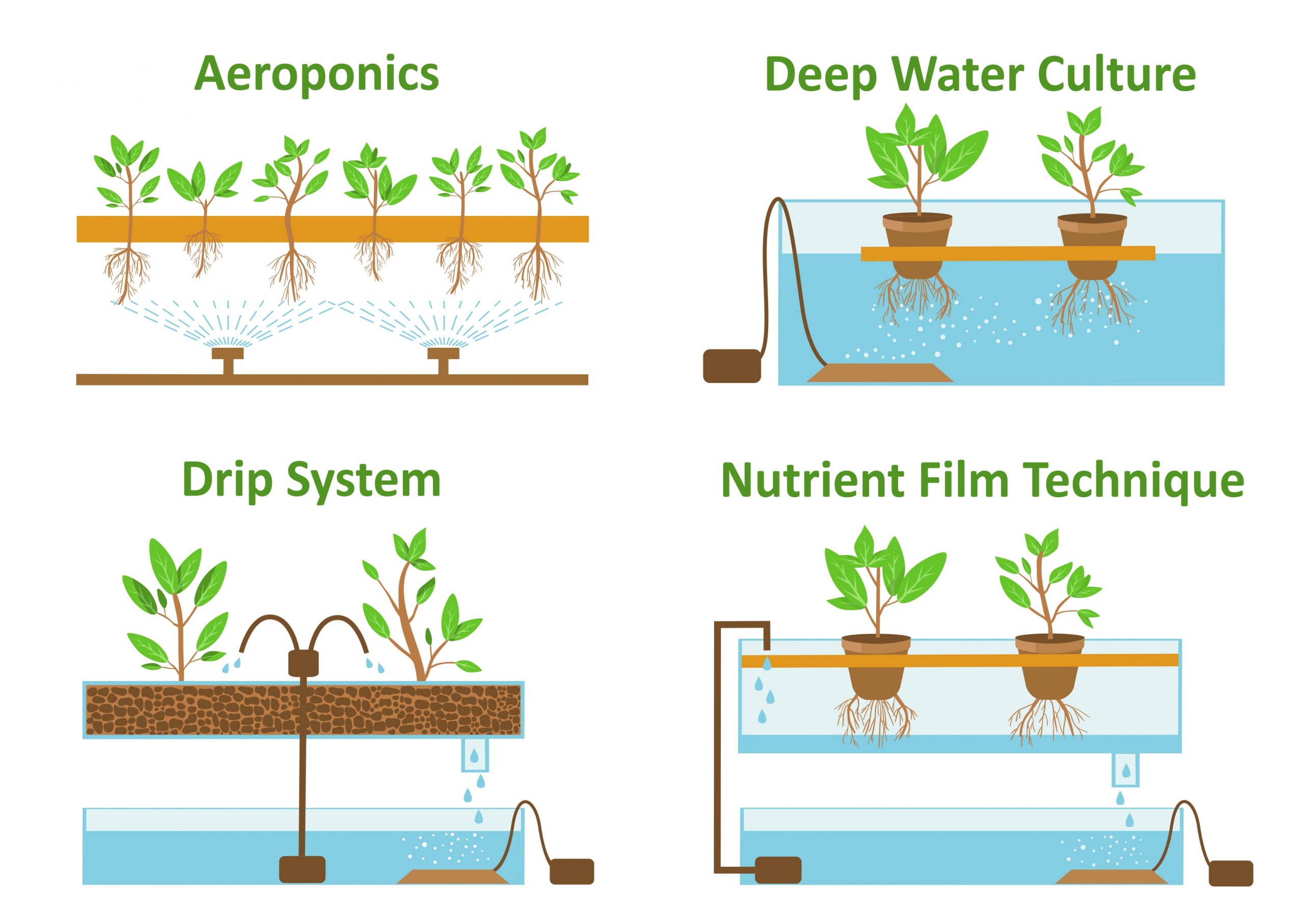Breathe Easy: Hydroponic Aeration Systems
Hydroponic Aeration Systems play a crucial role in the success of hydroponic gardening. So, what exactly are these systems all about? Well, hydroponic aeration systems are designed to provide oxygen to the plant roots by delivering air directly to the nutrient solution. They help create an oxygen-rich environment that promotes healthy root development and enhances nutrient absorption. In this article, we’ll explore the ins and outs of hydroponic aeration systems, how they work, and why they are essential for your hydroponic garden.
When it comes to hydroponics, it’s all about finding the best ways to mimic the natural growing conditions of plants. In soil-based gardening, plants receive oxygen through the air pockets in the soil. But in hydroponics, where plants grow in a nutrient-rich water solution, aeration systems step in to provide that much-needed oxygen boost. Think of it like a breath of fresh air for your plants, ensuring they thrive and grow to their full potential.
So, why is aeration so important? Well, oxygen is vital for plant respiration, which is the process where plants convert sugars into energy. A well-aerated hydroponic system ensures that the roots and the water meet the oxygen requirements of the plants, leading to healthier growth, increased nutrient uptake, and improved overall plant performance. With a hydroponic aeration system in place, you can expect vibrant, thriving plants that yield bountiful harvests.
Looking to optimize your hydroponic system’s performance? Discover the power of hydroponic aeration systems. These innovative devices deliver the perfect amount of oxygen to your plants’ roots, promoting faster growth and healthier yields. With their efficient design and customizable features, hydroponic aeration systems provide an essential solution for maintaining optimal oxygen levels in your hydroponic setup. Say goodbye to stagnant water and hello to thriving plants! Upgrade your hydroponics game today.

The Importance of Hydroponic Aeration Systems: Ensuring Healthy Plant Growth
Hydroponic gardening has gained popularity in recent years as an efficient and sustainable way to grow plants without the need for soil. One crucial aspect of successful hydroponics is proper aeration. Aeration systems ensure that plants receive an adequate supply of oxygen, which is essential for their growth and overall health. In this article, we will explore the benefits of hydroponic aeration systems, the different types available, and tips for optimizing their effectiveness.
1) The Role of Oxygen in Hydroponics
In traditional gardening, plants get their oxygen supply from the air pockets in the soil. However, hydroponic systems eliminate the need for soil, meaning there is no natural oxygen source for the plants. This is where hydroponic aeration systems come into play. These systems provide a constant supply of oxygen to the plant roots, promoting healthy growth and preventing issues such as root rot.
Oxygen is crucial for several essential functions in plants. It is involved in the breakdown of nutrients, aiding in the absorption of minerals and water through the root system. Oxygen also plays a crucial role in cellular respiration, allowing plants to convert stored energy into usable forms. Without adequate oxygen, plants may develop weak root systems, stunted growth, and a reduced ability to take in nutrients.
The Benefits of Hydroponic Aeration
Hydroponic aeration systems offer numerous benefits to plants and growers alike. Firstly, these systems improve nutrient uptake. Oxygen-rich environments encourage the efficient absorption of nutrients, ensuring that plants receive the necessary elements for optimal growth. This leads to healthier and more vigorous plants with increased fruit or flower production.
Secondly, aeration systems help prevent the buildup of harmful gases in the nutrient solution. Without proper aeration, stagnant water can become depleted of oxygen and promote the growth of anaerobic bacteria. These bacteria produce toxic byproducts, such as hydrogen sulfide, which can harm plant roots. By continuously oxygenating the nutrient solution, aeration systems reduce the risk of these harmful compounds and maintain a healthy root environment.
Lastly, aeration systems aid in maintaining the pH balance of the nutrient solution. Oxygen plays a vital role in buffering pH levels, preventing drastic fluctuations that can lead to nutrient deficiencies or toxicities. By ensuring a stable pH, aeration systems help plants maintain optimal nutrient uptake and overall health.
2) Types of Hydroponic Aeration Systems
When it comes to hydroponic aeration systems, there are several options available to suit different growing setups and plant types. Here are three commonly used systems:
1. Air Stones and Air Pumps: Air stones, also known as diffusers, are porous stones that release small air bubbles into the nutrient solution. These bubbles provide oxygen to the roots. Air pumps, typically used in conjunction with air stones, deliver a constant stream of air to the stones, ensuring continuous aeration.
2. Venturi Aeration: Venturi aeration is a system that utilizes the pressure created by water flowing through a constricted tube. The pressure drop creates a partial vacuum, which draws air into the system and mixes it with the nutrient solution. This method is energy-efficient and can be integrated into larger hydroponic setups.
3. Nutrient Film Technique (NFT) Aeration: In NFT systems, a thin film of nutrient solution flows over the roots of the plants, providing constant moisture and nutrients. Aeration in NFT systems is typically done through the use of sprinkler heads or spray bars that create a fine mist of nutrient solution, enriching it with oxygen before it flows across the roots.
Each type of hydroponic aeration system has its advantages and applications, so it’s essential to choose the one that best suits your specific hydroponic garden setup and plant requirements.
Tips for Optimizing Hydroponic Aeration Systems
To ensure your hydroponic aeration system operates at its best, consider the following tips:
1. Monitoring Oxygen Levels: Regularly check the oxygen levels in the nutrient solution using a dissolved oxygen meter. The optimal dissolved oxygen level for hydroponic systems is around 8-10 parts per million (ppm). Adjust the aeration system as needed to maintain this range.
2. Cleaning and Maintenance: Keep your aeration system clean to prevent clogging and ensure efficient oxygen distribution. Regularly clean air stones or diffusers by soaking them in a solution of hydrogen peroxide or vinegar and water.
3. Proper Sizing: Consider the size and needs of your hydroponic system when selecting an aeration system. A larger system may require multiple air pumps or larger air stones to ensure adequate oxygen supply.
4. Backup System: Consider installing a backup aeration system, such as a battery-powered air pump, to maintain oxygen supply in case of power outages or equipment failure.
In summary, hydroponic aeration systems play a vital role in ensuring healthy plant growth and maximizing yields in hydroponic gardens. By providing a constant supply of oxygen to the roots, these systems promote nutrient absorption, prevent the buildup of harmful gases, and maintain an optimal pH balance. Understanding the different types of aeration systems available and following best practices for their optimization will help you create a thriving hydroponic garden. So, embrace the power of hydroponic aeration and give your plants the oxygen they need to flourish!
Key Takeaways – Hydroponic Aeration Systems
- Hydroponic aeration systems ensure proper oxygenation for plant roots.
- These systems use air pumps to create bubbles or mist for oxygen transfer.
- Oxygen is crucial for root health and nutrient absorption in hydroponic systems.
- Adequate aeration prevents root rot and promotes optimal growth and yields.
- Choose the right aeration system based on your hydroponic setup and plant needs.
Frequently Asked Questions
What role does aeration play in a hydroponic system?
In a hydroponic system, aeration plays a crucial role in providing oxygen to the plant roots. It helps in the absorption of nutrients and promotes healthy growth. With proper aeration, the roots receive the necessary oxygen for respiration, preventing root rot and other oxygen-related issues.
A well-aerated hydroponic system also helps in preventing the growth of harmful pathogens and algae. It enhances nutrient uptake and stimulates the growth of beneficial microorganisms that contribute to plant health. Overall, aeration is essential for maintaining the optimal conditions required for successful hydroponic growth.
How does an air stone improve aeration in a hydroponic system?
An air stone is a commonly used tool in hydroponics to improve aeration. It is a porous stone that is connected to an air pump, which releases tiny air bubbles into the nutrient solution. These bubbles increase the surface area of the water, allowing for better oxygen exchange.
The air stone creates turbulence, which helps in breaking down large oxygen bubbles into smaller ones. This finer bubble size ensures that the oxygen is distributed evenly throughout the root zone, reaching every root hair. As a result, the plant roots receive a continuous supply of oxygen, promoting rapid growth and nutrient absorption in a hydroponic system.
What are the benefits of using a recirculating system for hydroponic aeration?
A recirculating system in hydroponics offers several benefits when it comes to aeration. Firstly, it allows for continuous oxygen replenishment in the nutrient solution. As the solution circulates, it is exposed to air, picking up essential oxygen and releasing any excess carbon dioxide. This ensures a constant supply of oxygen to the plant roots.
Secondly, a recirculating system promotes consistency in nutrient delivery. The continuous circulation helps in maintaining an even nutrient concentration throughout the system, reducing the chances of nutrient imbalances or deficiencies. Additionally, it prevents the formation of stagnant zones where oxygen depletion can occur, ensuring optimal aeration and plant growth.
Can I use an aquarium pump for aeration in my hydroponic system?
Yes, you can use an aquarium pump for aeration in your hydroponic system. Aquarium pumps are designed to provide aeration in fish tanks by circulating water and creating bubbles. They can be easily adapted for use in hydroponics by connecting air stones or air diffusers to them.
While aquarium pumps are a cost-effective option, it’s important to ensure that the pump is suitable for the size of your hydroponic system. Consider the volume of water you need to aerate and choose a pump that can provide adequate airflow. Also, make sure to clean and maintain the pump regularly to prevent clogging and to ensure optimal performance.
What are some alternative methods of aeration in hydroponics?
Apart from traditional air stones and aquarium pumps, there are alternative methods for aeration in hydroponics. One popular method is the use of Venturi injectors, which create a vacuum and draw air into the nutrient solution. These injectors utilize the flow of water to create pressure differentials that drive air into the system.
Another alternative is the use of oxygen generators or oxygen concentrators. These devices extract oxygen from the surrounding air and supply it directly to the nutrient solution. They provide a consistent and high concentration of oxygen, ensuring optimum aeration for hydroponic plants. However, oxygen generators can be costlier compared to other aeration methods and may require additional maintenance.

Aeration vs No Aeration – Hydroponic Peppers w/Time Lapse (Brinno) “Semi-DWC vs Kratky”
Summary
Hydroponic aeration systems are important because they provide oxygen to the plant roots. Oxygen helps the plants absorb nutrients and grow faster. Aeration systems also prevent the roots from rotting and keep the water clean. There are different types of aeration systems, including air pumps and air stones. These systems can be used in various hydroponic setups, such as DWC and NFT. It is essential to choose the right aeration system and maintain it properly to ensure healthy plant growth in hydroponics.

